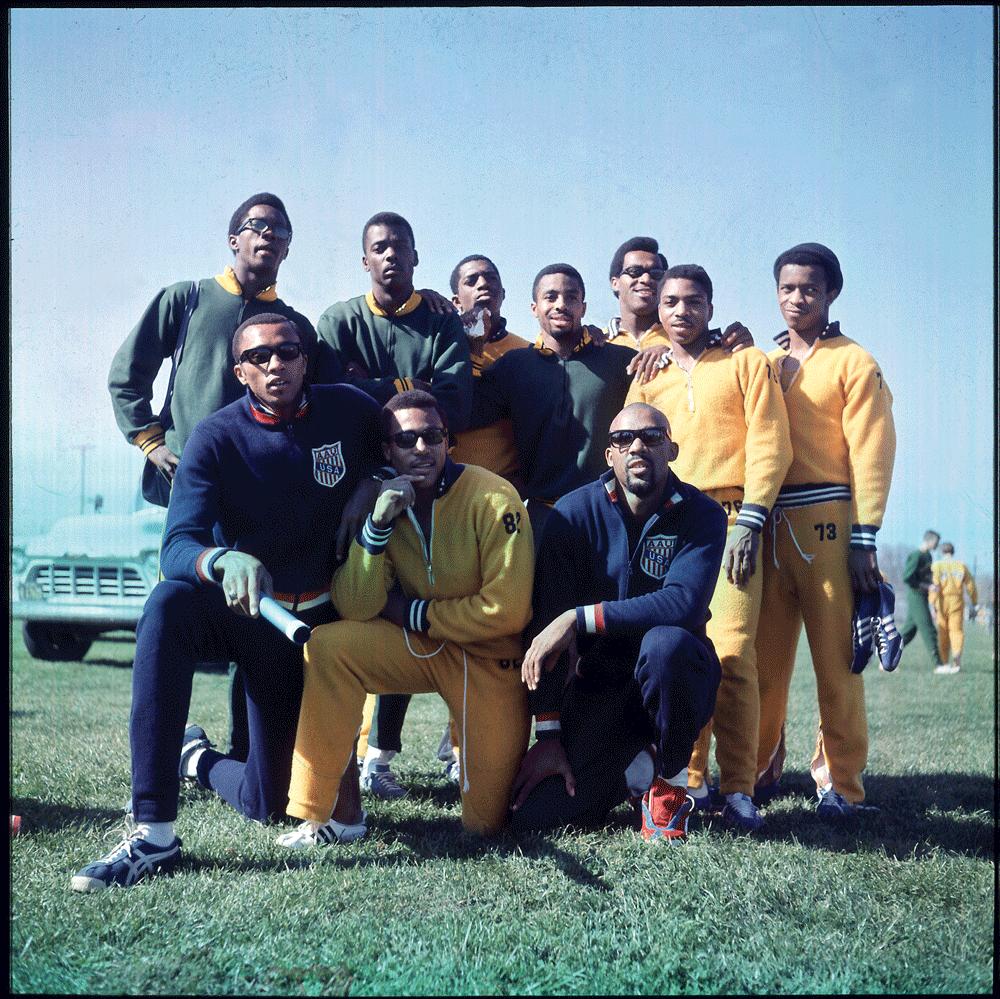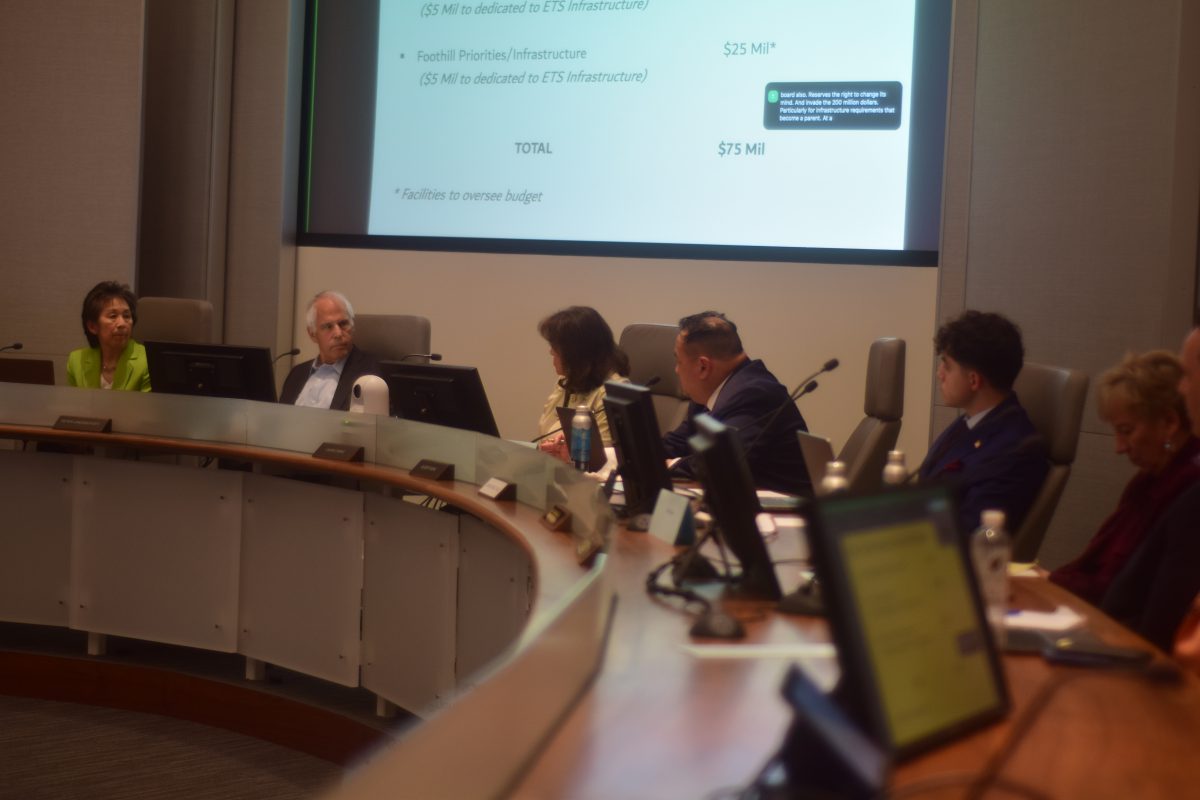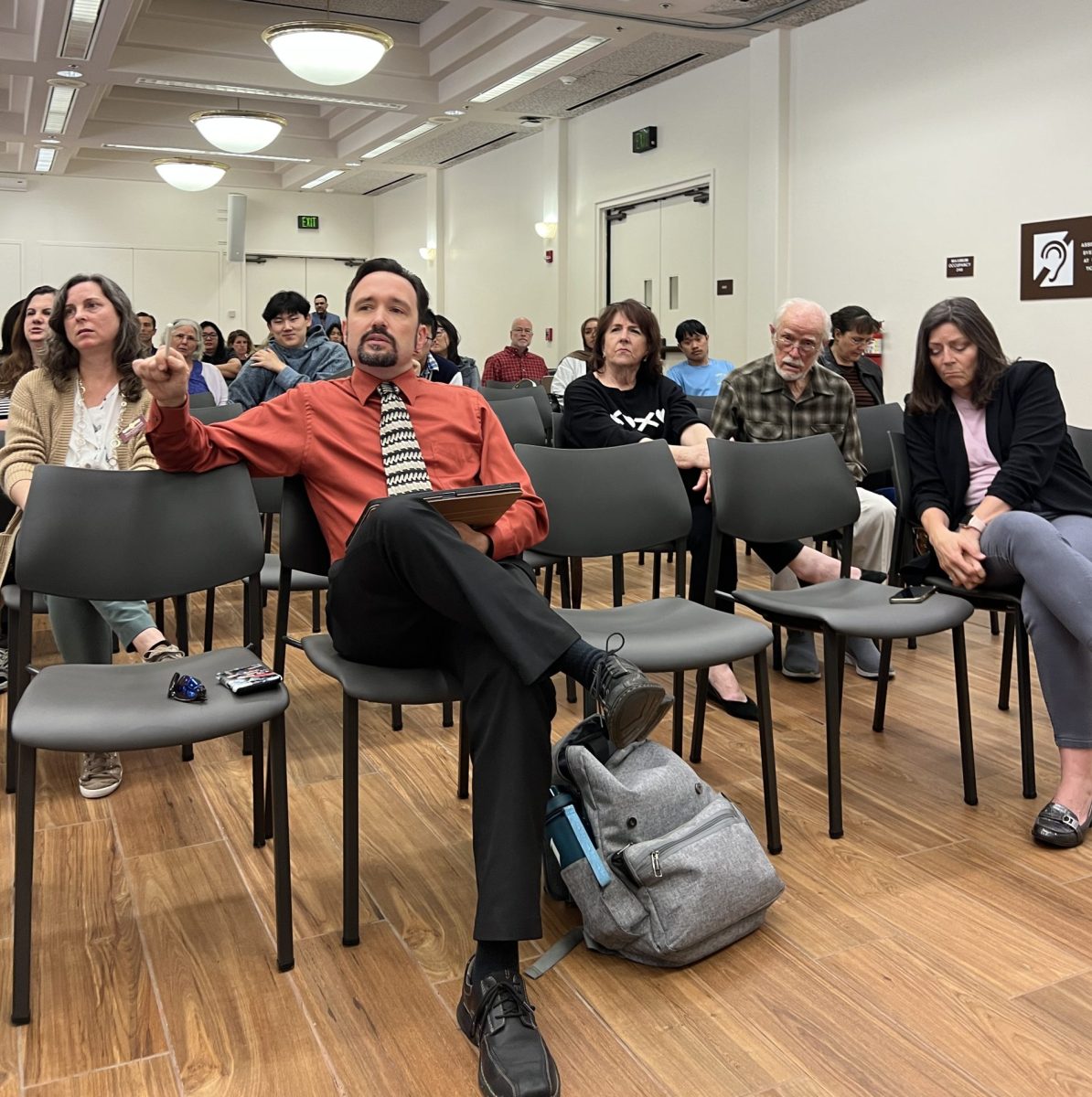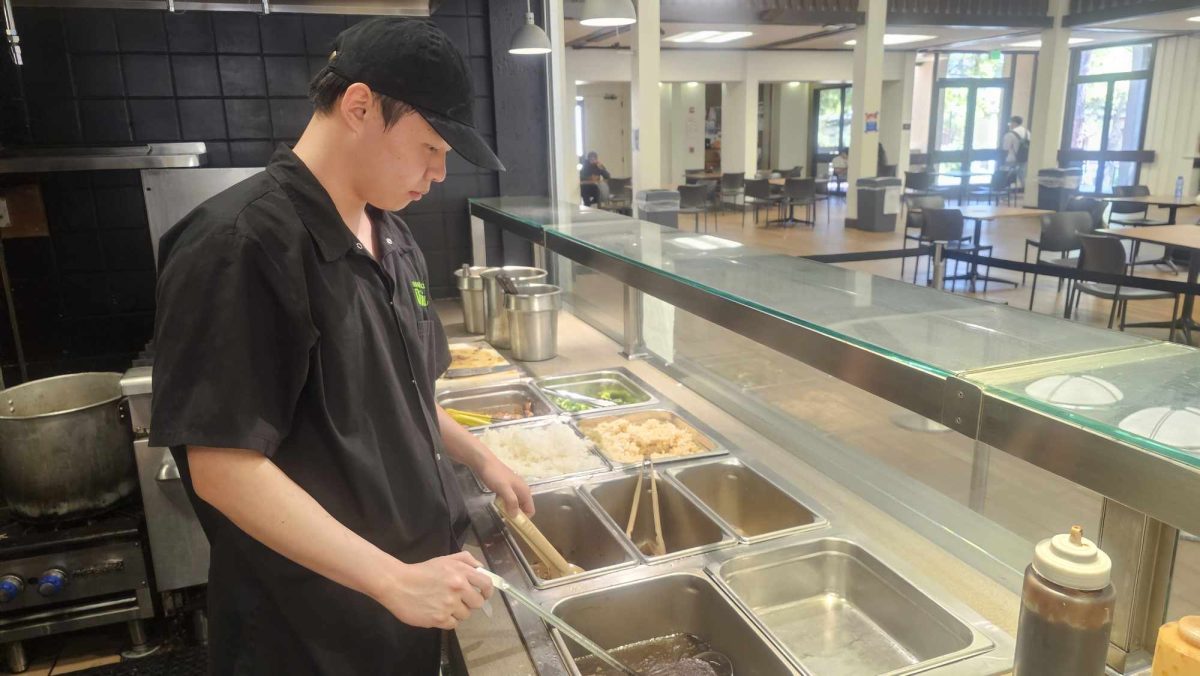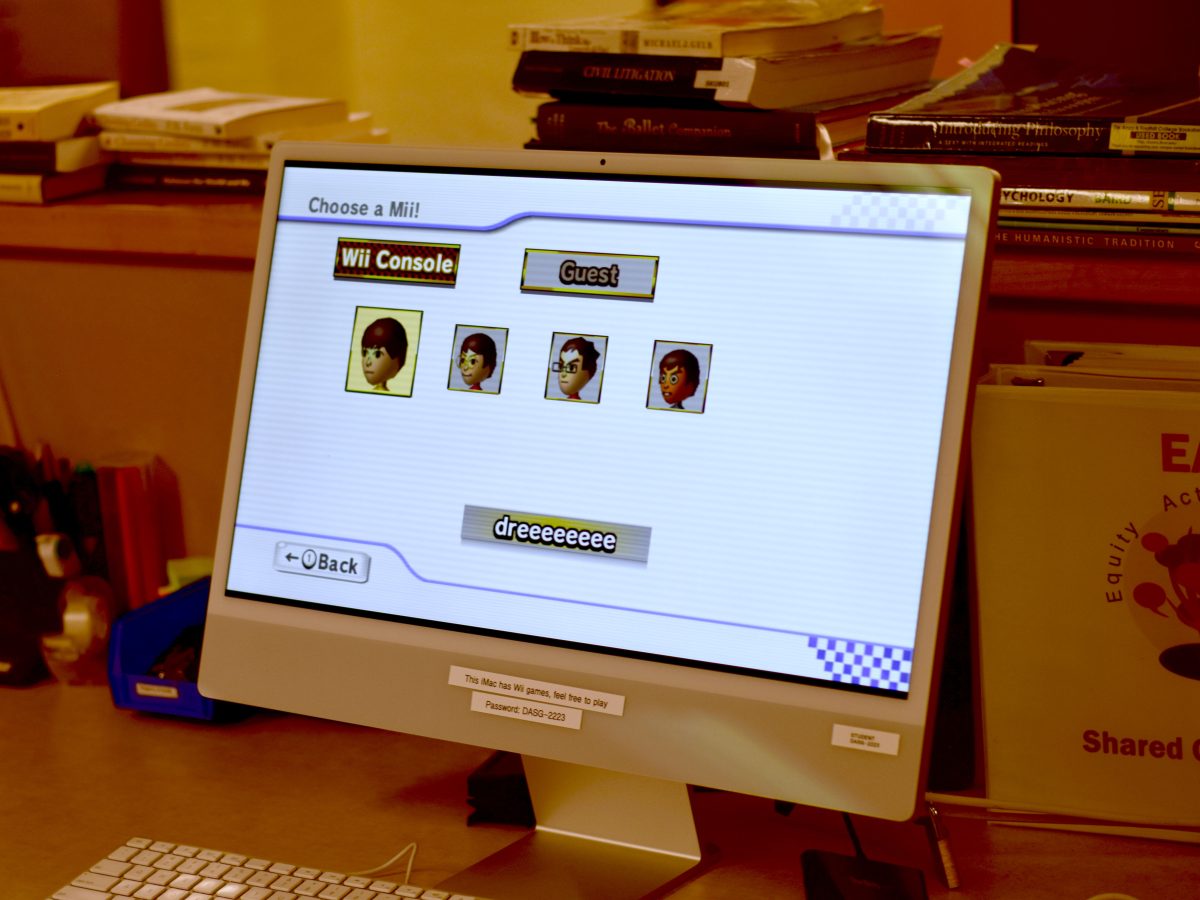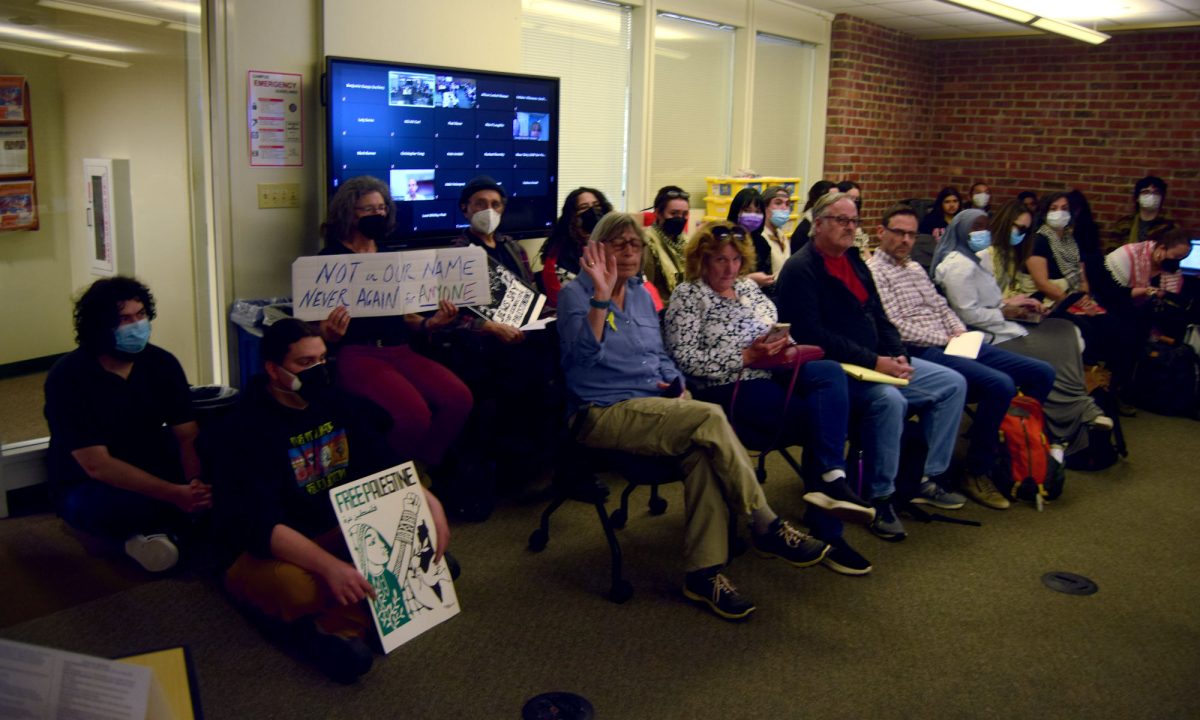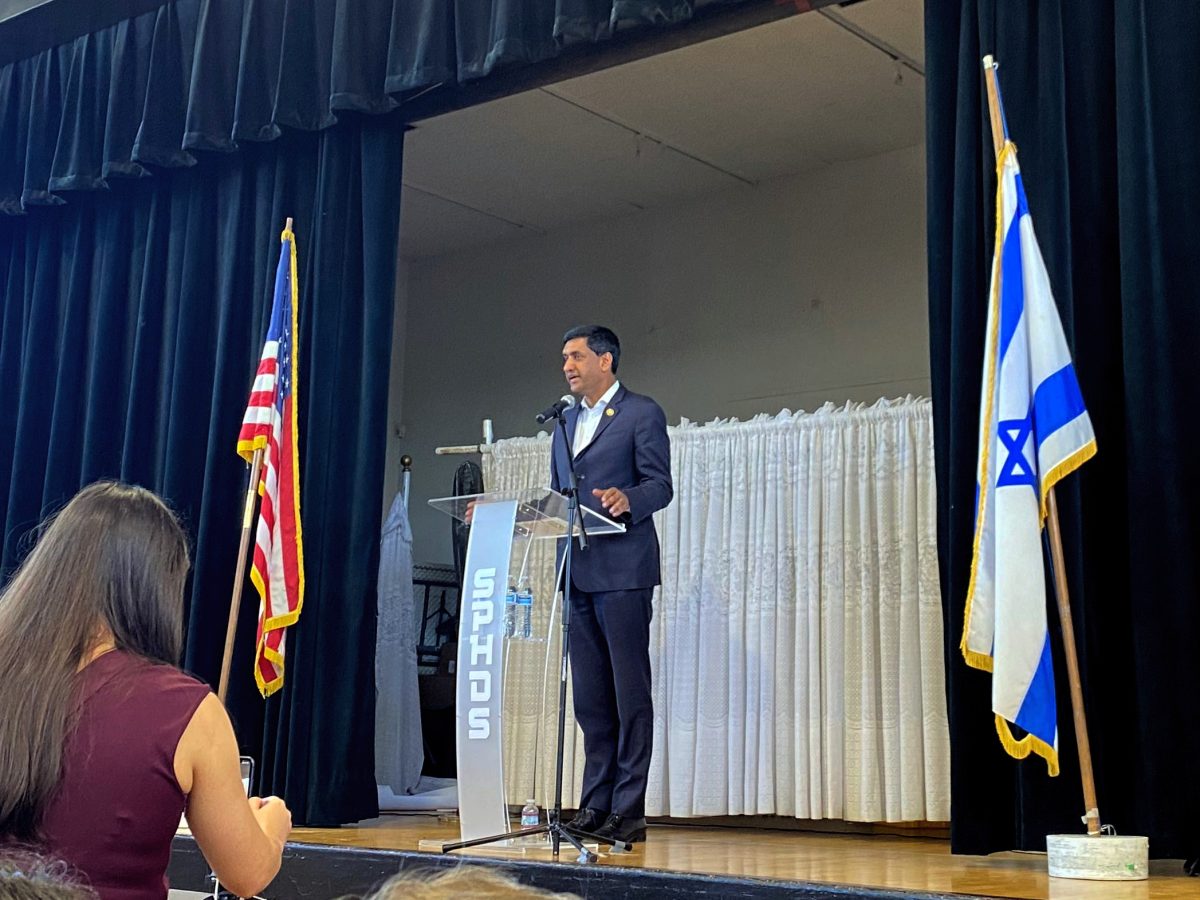“The Black Panther Party was going strong, the free speech movement in Berkeley, the peace march in San Francisco – it was a wonderful time to be alive,” former De Anza College administrator Robert Griffin said in a panel discussion on Feb 22.
He was joined by other retired De Anza faculty and staff in a discussion about African-Americans at San Jose State in the 1960s.
Around 100 people watched Eb Hunter, Marion Winters and Griffin speak in the Hinson Campus Center in a talk facilitated by language arts staff member Ulysses Pichon.
During the 1960s, San Jose State boasted an impressive track and field team that earned the nickname “Speed City.” Lee Evans, Tommie Smith, John Carlos and former De Anza administrator Robert Griffin were among the African-American student-athletes and social activists on the team who brought the university into the national spotlight while advocating for racial equality.
Smith and Carlos went on to win gold and bronze medals, respectively, in the 200-meter race in the 1968 Summer Olympics in Mexico City. They were made famous by the iconic image of their raised fists and bowed heads atop the medal stand, symbolizing black power and protesting racism and poverty.
Griffin, former vice president of student services, remembered his teammates Smith and Evans as ordinary young men.
“It’s not that they had some amazing political consciousness,” he said.
Griffin credited activists and professors at San Jose State, notably Dr. Harry Edwards, “that just refused to let us be naive.”
Besides fostering the careers of several celebrated black athletes, San Jose State made national news in 1968 when Valerie Coleman was elected as the university’s first black homecoming queen. She would go on to become the first African-American National College Queen.
Eb Hunter was on the university’s football team at the time and remembered the atmosphere in the locker room and on the field.
“We were really motivated,” said Hunter, former chair of African-American studies at De Anza. “We didn’t want to let her [Coleman] down.”
Marion Winters, a friend of Coleman, recalled the impression she and her circle of friends had towards the unprecedented event.
“We thought, ‘This is unusual for San Jose State,’ but we had no clue that it would have a national impact,” said Winters, who previously served as De Anza’s director of diversity.
Facilitator Pichon chimed in with memories about the national attention the event garnered.
“I remember sitting and watching this in Louisiana and not believing it,” Pichon said. “Not believing that a black woman was actually going to be homecoming queen at this major university.”
While comparing their experiences to those of today’s youth attending De Anza and San Jose State, every speaker agreed on a sentiment directed by Griffin to present day students.
“I don’t envy you,” Griffin said.
Hunter said there has been a change in ideals and definitions of heroes since his days in college.
“If you were real bright, well-read and articulate, we thought you were really cool,” Hunter said. “I think one of the things that’s changed a bit, in terms of what we idolize and respect, is the notion of being a gangster. I think that’s one of the things that has changed at San Jose State and in some ways changed in general among today’s students.”
Awareness of racial and social movements in today’s schools was also scrutinized.
“If you are under 30 years old in this institution please answer this question, if you’re over 30 don’t say a word,” Griffin said before pointedly asking, “When was the civil rights act passed?”
The room was silent. Once the question was opened to those over 30, the room responded with a resounding, “1964.”
Griffin asked the question to illustrate his feeling that while young adults today may know about prominent events of the civil rights movement, they do not appreciate how recent the events were or see them as relevant to the present day. He criticized today’s youths for living in a “dreamland.”
“You have no idea of the institutionalized racism that’s threatening you everyday,” Griffin said, “and you’re walking around here and you think things are fine and it’s a joke … It’s not fine, and it’s time to wake up.”
Reflecting on their participation in this chapter of American history, Griffin said, “For us, we were very fortunate, because at San Jose State we were pushed into waking up politically, socially, and spiritually.”
While understanding the significance of their actions in hindsight, Winters summed up the sentiments of the panelists.
“Often times when you’re in the midst of it,” she said, “you don’t really understand the impact of the history that you are involved in making.”



